The 10 Habits That Supercharged My Productivity (Without More Hours)
Warning: I’ve nuked voicemail, social media, and even inbox zero.
Most people are drowning in distractions, overloaded by information, and still convinced they need to “do more” to be productive.
I disagree.
These 10 habits have made me more productive than 99% of people I know—not because I work harder, but because I’ve cut ruthlessly. Fewer decisions. Less noise. More focus.
If you want more time, more output, and less mental clutter, start here.
1. Turn Off (Almost) All Notifications
In 2024, the average American checked their phone 205 times a day. That’s nearly every five minutes while awake, and it’s getting worse, not better. That number is up 43% from 2023, when we averaged just 144 checks per day.1
All that checking adds up to five hours a day on our phones—and that’s not even counting the productivity cost of constant context switching.
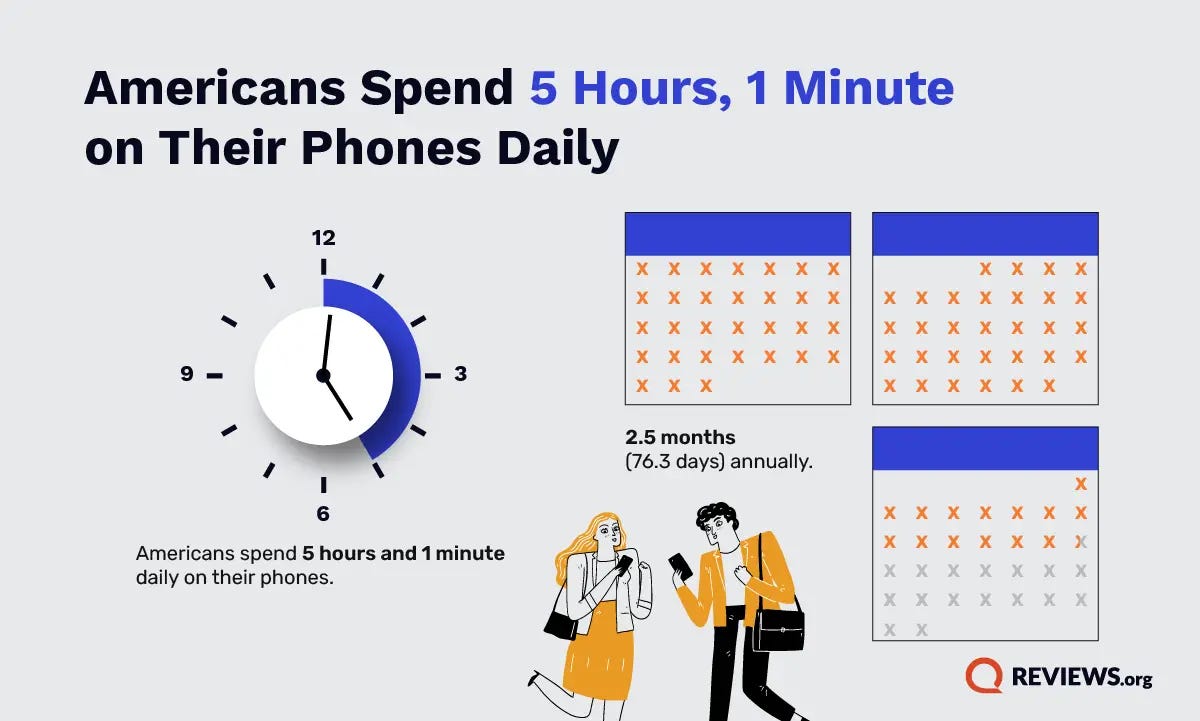
Most people’s phones and computers are in constant alert mode. Every ping, buzz, or banner is a mini interruption, and it shatters your focus.
Here’s my rule: Only phone calls and texts are allowed to interrupt me.
No Slack.
No Instagram DMs.
No email alerts.
No “You might like this” nudges.
No notification badges.
I still check those things…just when I’m ready. Usually once or twice a day, on my own schedule.
You’ll be amazed how quiet your brain feels when your devices aren’t constantly demanding your attention. It’s not just about saving time; it’s about creating space to think.
2. Get Rid of Voicemail (Or Anything You Dread Checking)
Voicemail is a productivity black hole. It’s slow, inconvenient, and usually irrelevant, but it still steals your time and mental energy.
So I nuked it.
I disabled voicemail years ago, and guess what? Nothing bad happened. The people who really need to reach me either text, email, or call again. The rest wasn’t urgent anyway.
This same principle applies to anything you avoid checking: overflowing inbox, a random project management tool you never look at, or that one Slack workspace you forgot you joined.
If something drains your attention and adds no real value, try this:
Disable it.
Auto-forward it.
Delete it entirely.
Most of the “obligations” we carry are just default settings we’ve never questioned.
3. Put a Timer on Social Media (Until You Break the Habit)
Social media is engineered to hijack your attention. If you’re not intentional, it’ll eat hours of your day without you even noticing.
When I was trying to break the habit, I set time limits on my phone to cap how much time I could spend on apps like Instagram. That little bit of friction made a huge difference.
Now? I rarely need the timer. The impulse to mindlessly scroll is pretty much gone because I trained myself to stop reaching for it every time I hit a lull.
You don’t have to quit cold turkey.
But you do need to interrupt the default behavior.
A little structure now leads to a lot more freedom later.
On Android, you’ll find this feature in your settings under “Digital Wellbeing,” and on iPhone, you’ll find it in your settings under “Screen Time.”
Note: If you do need to use social media for work, try posting through a third-party tool that acts as a buffer… like, say, Buffer. It keeps you out of the doomscroll so you can stay focused on what actually matters.
4. Forget About Inbox Zero
Inbox zero is one of those productivity myths that feels virtuous, but often turns into a giant time suck.
I used to chase it. Now I don’t bother. Because the truth is, most emails don’t need a reply. And definitely not a fast one.
I check my email a few times a week. I respond if it’s necessary, and let the rest pile up. If something’s really important, the sender can either follow up or find another way to reach me.
Your inbox is not your to-do list. It’s a stream of other people’s priorities, and it’s making you stressed and less effective.
In a UC Irvine study, workers with constant access to email switched screens twice as often and had consistently elevated heart rates, both signs of increased stress. When email was removed, they focused longer and felt significantly calmer.23
Let go of the idea that a clean inbox means you’re on top of things. It usually just means you’re busy reacting, not actually doing the work that matters.
In Gmail, you’ll find this feature in your settings under “Filters and Blocked Addresses.”
Note: If there are emails you absolutely don’t want to miss, set up filters so they land somewhere you’ll actually notice them, like a VIP inbox or with a special label.
5. Automatically Filter Your Emails
If you’re manually sorting your inbox, you’re wasting time.
I set up filters to handle everything that doesn’t need my attention right away: newsletters, receipts, system alerts, random updates, etc. They skip my main inbox and land in folders I review if and when I want to.
That way, the stuff that does hit my primary inbox is more likely to be:
Real messages from real people.
Things that actually require a decision or action.
Let the robots sort the noise so your brain doesn’t have to.
It’s not perfect; some unimportant things will still slip through the cracks. But, like I explained above, that’s also why I don’t chase inbox zero. You’ll spend less time scanning and more time doing what matters.
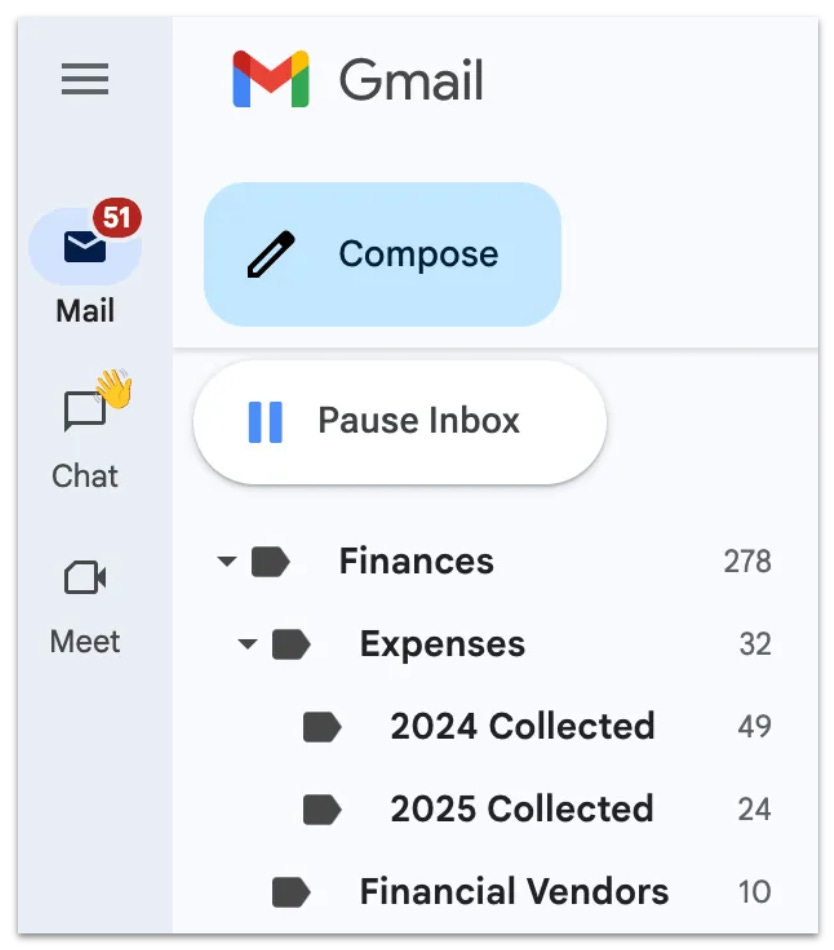
6. Batch Similar Tasks
Multitasking isn’t efficient, it’s exhausting. Every time you switch contexts, you pay a mental tax.
A UC Irvine study found it takes over 23 minutes to fully refocus after an interruption. Not only that, people rarely return straight to their original task. They often bounce to two or three unrelated things first, or forget to go back entirely.4
So instead of bouncing between unrelated tasks all day, I group similar ones together:
Email happens in one focused block (no constant notifications).
Admin work gets its own chunk.
Content creation stays uninterrupted.
Errands are batched into a single run.
Batched work means fewer gear shifts, deeper focus, and faster output.
It’s not always perfect (life happens), but even partial batching makes a huge difference.
If your day feels scattered, try this: Pick one type of task and dedicate a specific block of time to it. Then protect it like it matters (because it does!).
7. Declare Tab Bankruptcy Every Morning
If you start your day by reopening yesterday’s tabs, you’re starting with yesterday’s priorities, not today’s.
So I don’t.
Every morning, I close all my browser tabs. No guilt. No second-guessing. If something was really important, I’ll remember it or find it again.
It’s a small ritual, but it resets my mental slate.
Instead of playing catch-up, I’m focused on what actually matters right now.
Tab clutter = brain clutter.
Clear both.
8. Choose One Important Thing Every Day
Before I check email, messages, or anything reactive, I decide on one high-leverage task I want to move forward that day.
Not five things.
Not a full to-do list.
Just one.
It’s the anchor for my day; something that, if I finish it, I’ll feel like I actually made progress.
Most days are full of noise, obligations, and distractions. Choosing one important thing is how I make sure the day doesn’t get away from me.
Momentum > multitasking.
9. Delegate, Delay, Delete
Every Sunday, I review my calendar for the week, not to admire how busy I am, but to create space.
I look at every meeting, call, or commitment and ask:
Can I delegate this?
Can I delay it?
Can I delete it altogether?
It’s not about avoiding work. It’s about protecting time for the most important stuff—deep work, creative focus, recovery.
Because every “yes” you leave on your calendar comes with a hidden cost: It’s time you can’t spend on real priorities. Time you won’t get back.
Most calendars fill up by default. This habit helps me fight back.
Time is your most limited resource. Treat it like it matters.
10. Stick to Just-In-Time Learning
If you’re an ambitious person with a growth mindset, you probably love to learn.
Same.
But it’s easy to drink from the firehose of information, and if you’re not careful, you’ll drown in stuff you don’t actually need.
When you come across an amazing resource, ask yourself: Is this useful right now? If not, bookmark it or let it go.
Because the real trap isn’t missing out on knowledge; it’s spending all your time learning and not nearly enough time doing.
Stick to learning what you need to know as you need to know it.
About to set up a new Instagram account? Now is the time to learn how to create content that the Instagram algorithm will love. Not before.
Which Habits Will You Dare to Try?
Most productivity advice is about squeezing more into your day.
My advice is the opposite: focus on clearing space. Space to think, to build, to rest, to actually live.
These 10 habits aren’t about being perfect. They’re about being intentional.
A little less noise. A little more focus. A lot more progress.
If you feel overwhelmed, pick just one to try this week.
You’ll be surprised how much time you can reclaim when you stop letting default settings run your day.
To endless possibilities,
Casandra



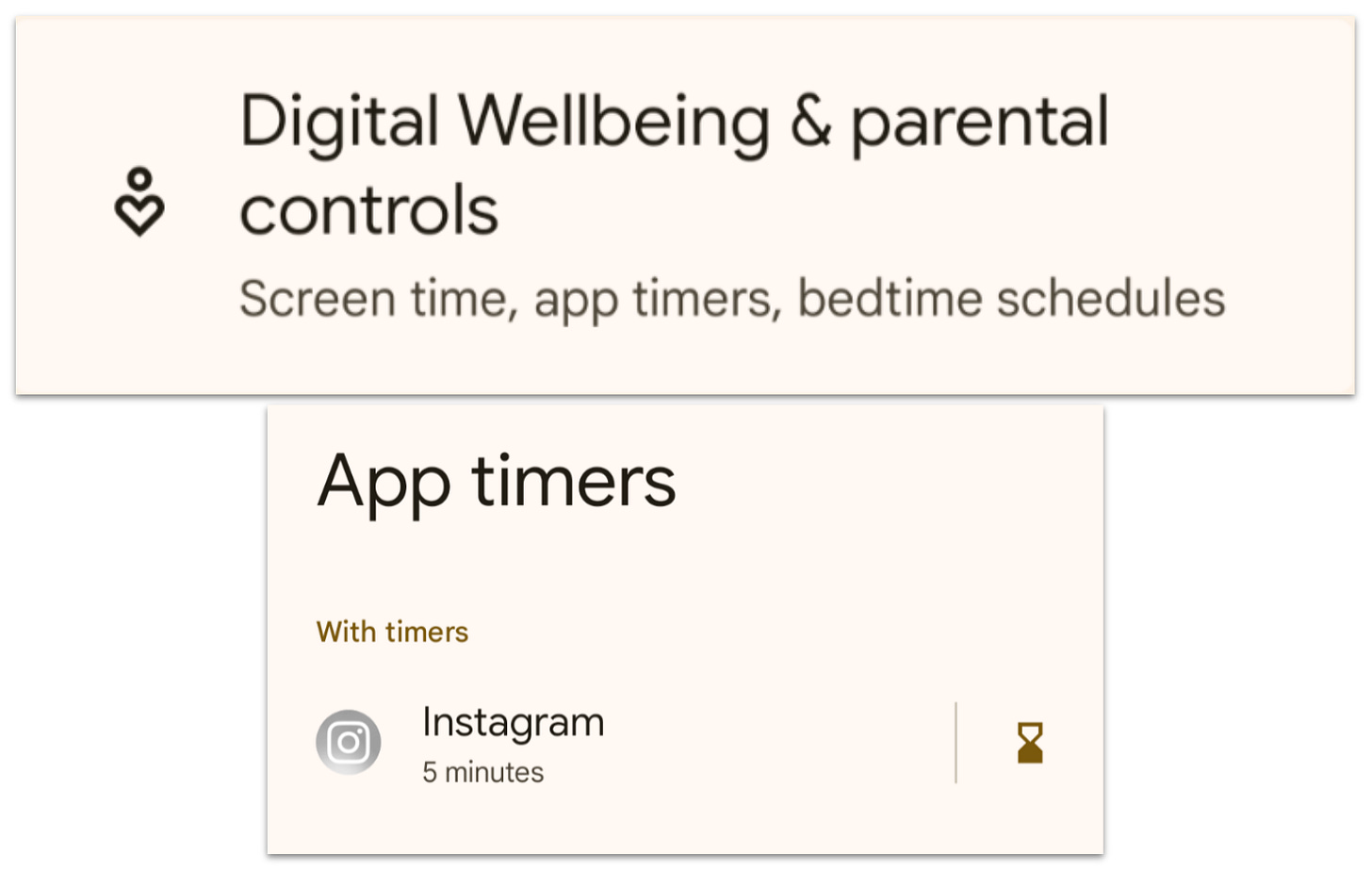
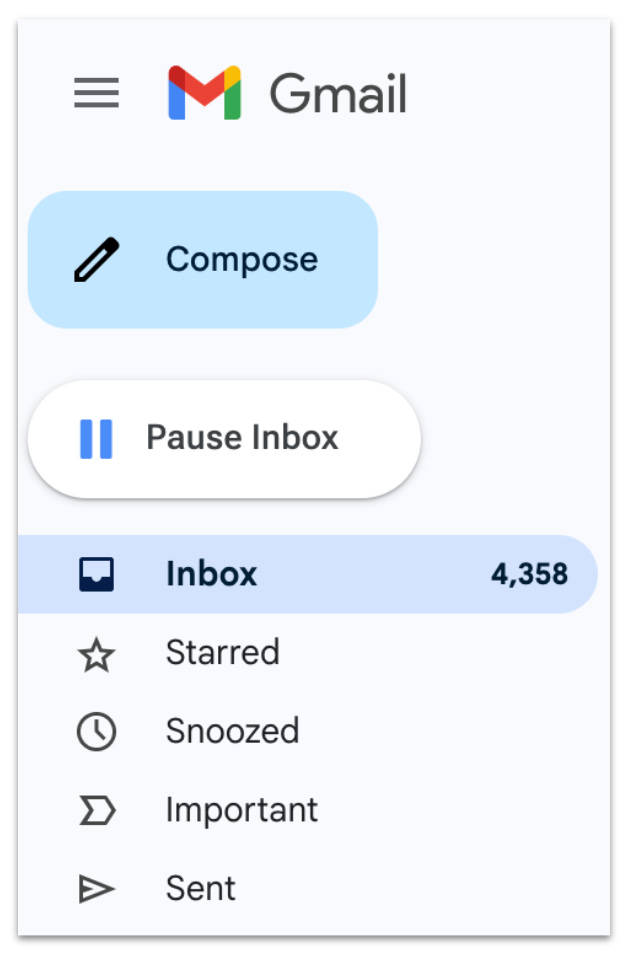

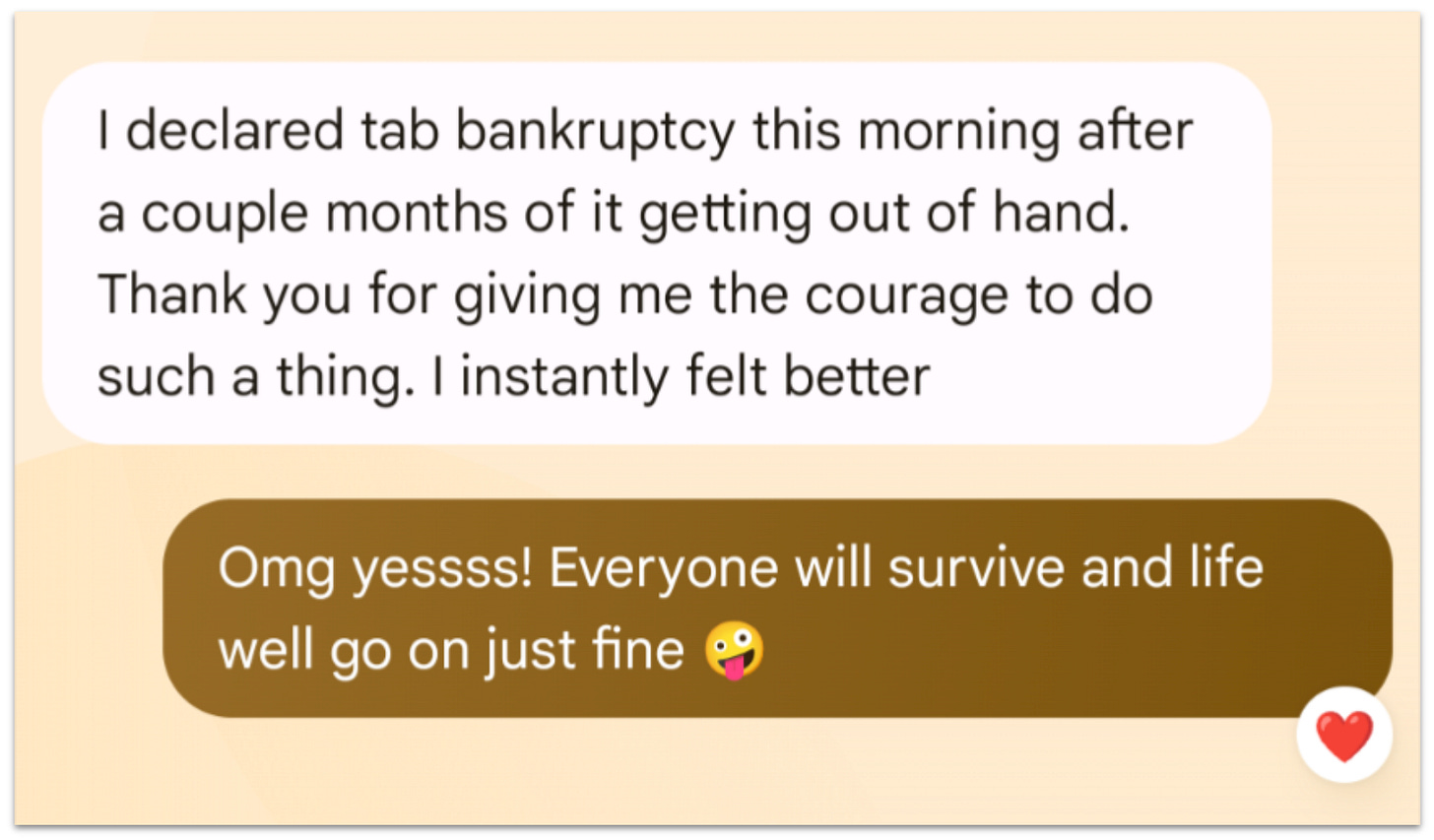
Nice list, Casandra.
Would love to contribute with the pieces I wrote about putting pur smartphones on grayscale mode.
It was extremely helpful to reduce usage.
Love this article. Today I was motivated to see what I could do for 205 minutes instead of hypothetically checking my phone. 25 mile bike ride for 115 min. Meditated for 20 min. Read for 30 min. Still have time to spare for myself instead of looking at my phone. Thanks Casandra!